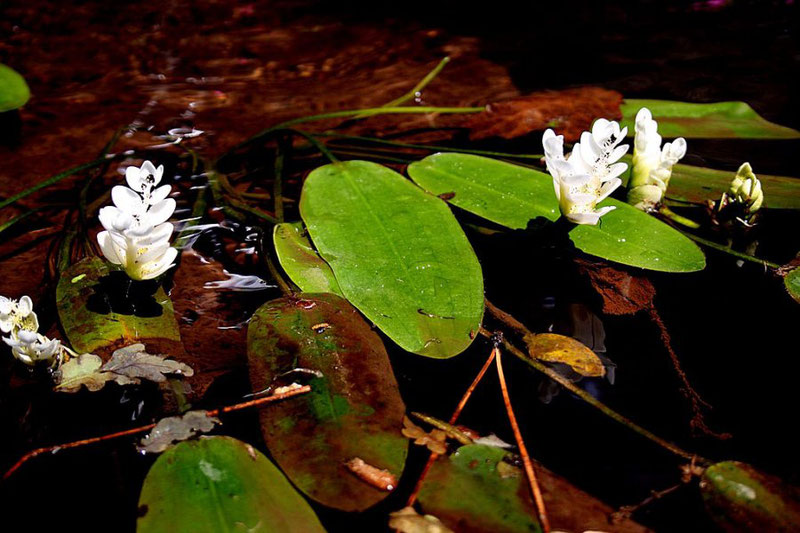Aponogeton distachyos
 Image: Hedwig Storch
Image: Hedwig Storch
Description
This is a well known local delicacy for the cold winter months. It has become so popular that many commercial plantings have been made in ponds around the western Cape. Cooked with onions, mutton or lamb and a few leaves of the local sorrel/suring (Oxalis pes-caprae) it makes a delicious stew.Waterblommetjies flower in profusion during winter and spring. Large areas of water in the Western Cape are covered with their sweetly scented, white flowers.
Propagation instructions - cuttings
Divide the clumps of tubers in summer. Plant new tubers in a pot with loam and place it in shallow water until the plants starts growing strong. The pot can then slowly be moved to deeper water in the sun. Plants can also be planted directly into the pond. Waterblommetjies are vigorous growers that will seed themselves, and in some areas might even need to be controlled.
Propagation instructions - seeds
The seed of Aponogeton germinates freely on the water surface. The young seedlings can be collected and grown on. They will reach flowering size in one season given ideal conditions. Dormant tubers are sometimes available from plant nurseries in the Cape.
Sources and references
Scientific name
Aponogeton distachyos
Common name(s)
Cape pond weed
